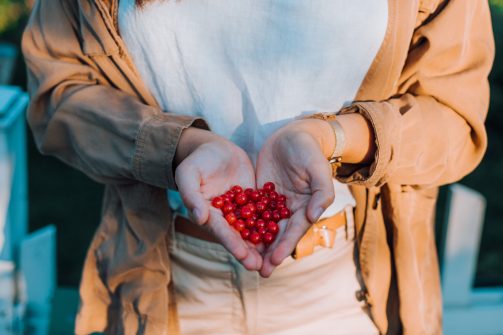Physical anxiety management
This self-care programme is for people who experience symptoms of anxiety and are interested in utilising physical methods in the regulation of anxiety. The programme was created in cooperation with the physiotherapy and exercise services of the City of Helsinki’s psychiatric and substance abuse service unit.

Welcome!
This programme involves practising anxiety regulation with physical methods. They are a source of support and help with anxiety symptoms for many people.
Instructions for starting the self-care programme
Before starting this self-care programme, you should take a little time to learn what the programme is all about. Be sure to read our general instructions for self-care programmes as well.
This self-care programme contains information about anxiety and its physical symptoms. It includes video exercises, sound recordings and contemplative assignments that you can use to practise anxiety regulation through physical methods and mindfulness. In order to be able to utilise these methods in difficult situations, you should practise them when you are feeling calm. Once you have learned a new skill, you can also utilise it when you are experiencing anxiety.
You could compare these skills to learning how to swim. You do not learn to swim by jumping into a stormy sea headfirst; you instead learn gradually in shallow and calm waters. By contrast, once you have acquired sufficient swimming skills, you can swim among choppy waves and dive to the bottom of the pool and resurface.
Watch the video below, in which physiotherapist Sari Lamio talks with experts by experience about how it feels to use physical exercises and what the experts have learned from both practising and the benefits of the exercises.
Anxiety management can be practised
Just reading about anxiety management methods is not enough. Instead, in order to learn to regulate anxiety through physical methods, it is important that you try and practise these exercises on a regular basis. You should start learning anxiety management skills from the basics, and it will take plenty of repetition for a skill to become automatic or for you to be able to use it in difficult situations.
Anxiety can manifest itself in a variety of symptoms that can be felt in both the body and the mind and seen in actions. The experience of anxiety often involves negative and difficult thoughts, beliefs and interpretations, such as “I’m inferior or inadequate”, “I can’t manage” or “people don’t like me.” Such thoughts are human, and we all have them to some degree.
Negative thoughts affect what we feel, and on the other hand, our emotions affect how we interpret situations. Emotions give rise to more emotions. We often feel our emotions in our body as well, and both emotions and bodily sensations prompt us to act.
It is typical for people to avoid displeasure. When anxiety arises, we aim to get rid of the difficult emotional state through avoidance and security behaviour. Examples of such behaviour include emotional eating, substance use, gambling or compulsive physical activity. Avoidance behaviour provides a quick relief, but the anxiety will soon return and undermine wellbeing in the long run.
Over the course of this self-care programme, you will become more aware of your own physical symptoms and be able to take small steps to learn ways to regulate your anxiety that are more constructive and support your wellbeing better. These methods are not likely to completely eliminate your anxiety, but they will help you do things that are meaningful to you despite your anxiety.
My anxiety is a part of life, but it no longer dominates. I’m the one in the driver’s seat.
Outi, expert by experience
Next, watch the video below, in which physiotherapist Sari Lamio talks with experts by experience Outi Järvinen and Lotte Mäkinen about how anxiety feels for them, what kind of situations trigger it and how they regulate anxiety.
Anxiety as an experience
Assignment: What is my specific anxiety like?
Anxiety is very common, but it is also a very personal and individual experience. Every person’s anxiety is unique. Getting acquainted with your own anxiety is useful when you are learning to regulate anxiety symptoms. If you do not know where the “problem” lies, it is difficult to try to “fix” it. By examining your own anxiety, you can also discover that its intensity varies. At some moments, it can even be gone altogether.
What is your anxiety like? What differences do you notice in situations, your thoughts, your emotions, your actions and your bodily sensations when your level of anxiety is high or low? Download the exercise as a form below.
At this point, you can also take an anxiety questionnaire. The questionnaire can help you assess how severe your anxiety is and what kind of support you may need. The questionnaire is also featured at the end of the programme, allowing you to gauge how your symptoms have potentially changed during the programme.
This self-care programme is designed to proceed incrementally, and the intention is not for you to go through all the materials at once. The programme is built on five different themes that you can schedule over a period of five weeks, for example, going through one section per week. You should reserve around 5–15 minutes for practising every day. You can also utilise sections of the programme that are important to you specifically.
If you schedule the programme as described above, mark the start and end dates on your calendar. You should also mark clear times on your calendar for going through the materials and doing exercises. This will make it easy for you to monitor your progress, set goals and, above all, notice how you develop over the course of the programme.
Each section of the self-care programme contains exercises and a weekly monitoring form onto which you can record how much you have practised. Each section begins with a return to the previous week’s exercises and a new breathing exercise. The idea is to make practising an everyday routine, like brushing your teeth.
The self-care programme features more than 20 different exercises. Not all of the exercises work in all situations, and everyone is unique in which exercise is suitable in a given situation. Some of the exercises can even feel silly at first. Regardless, it is important that you try the exercises with an open mind.
My anxiety has so many faces that my method of choice is tailored in accordance with what it (the anxiety) calls for.
Lotte, expert by experience
Record all the exercises you have done onto the ‘Intensity of anxiety and selection of methods’ form. There is no need to adopt every exercise into your everyday life. The important thing is that you try them out to find which ones are the most suitable for you.
At this point, download the table below, onto which you can record which methods you have tried during the programme and which ones work for you depending on the intensity of your anxiety. We will return to this table later during the programme.
-
1st week: anxiety and the body
-
2nd week: anxiety and breathing
-
3rd week: regulating severe anxiety
-
4th week: body awareness
-
5th week: presence and easing up
-
Final words
Task forms and exercise videos
You will get the maximum benefit from this treatment material by engaging in weekly reflection exercises and dedicating time for regular practice. You can find all the task forms and exercise videos included in this program compiled in the link below.

